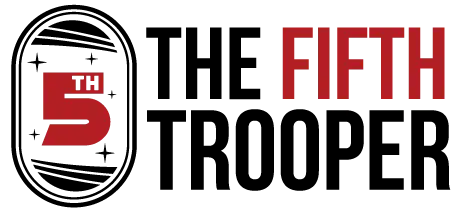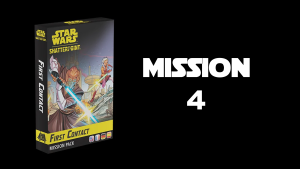Hello all! I’m Davis Tower Kingsley (aka “TowerNumberNine”). Some Legion old-timers may recognize me from my involvement in Star Wars: Legion competitive play — but now I’m coming to the Fifth Trooper blog not for Legion content, but to bring you some coverage of Fantasy Flight Games’s upcoming Star Wars: Unlimited TCG! “But Tower,” you might ask – “what is Star Wars Unlimited?” Well, that’s what this article is here to explain!

Star Wars Unlimited is an upcoming trading card game (TCG) from Fantasy Flight Games, who you may already be familiar with as the original creators of Star Wars: Legion prior to its transfer to Atomic Mass Games. Star Wars: Unlimited has relatively simple mechanics and fast gameplay, offering much quicker rounds than some of Fantasy Flight’s past card game titles – but it’s not a boring or “dumbed down” experience, either, as Unlimited also has surprising strategic depth and important decisions to make in game. I’m quite fond of it!
To win a game of Star Wars Unlimited, you destroy the enemy base. To do this, players play units to two different arenas – one representing space battles and one representing ground combat. Once played, units can later attack enemy units in the same arena or go after the enemy base directly – the first player to destroy the enemy base by reducing its hit points to zero is victorious.
This may sound fairly familiar to players who are familiar with other card games — but Star Wars Unlimited has several key factors that differentiate it from other titles. Here are a few of them:
What Makes Star Wars Unlimited Stand Out?
Initiative System and Alternating Activations
First up, unlike many card games in the space, Star Wars Unlimited uses an alternating activation system. This style of gameplay might well be familiar to players who have experience with some of FFG’s other titles, like Legion or Destiny — this system means that players take turns playing and activating their cards rather than one person taking an entire turn and then the opponent doing the same.
As a result, Unlimited tends to have very dynamic gameplay, with each player trying to disrupt the other’s plan and a lot of back and forth between the players. Further, one of the actions you can take is to claim the initiative — doing this means that you won’t take any other actions that turn, but allows you to make the first move next turn. This dynamic with alternating activations and the initiative really helps make Unlimited “easy to learn but difficult to master,” as an old saying goes.
Quick But Deep Gameplay
Games of Star Wars Unlimited have a lot of interesting decisions, but also play relatively fast. Players used to spending two or even three hours on a game of Legion might enjoy a game where you can quite plausibly play a best-two-out-of-three match in an hour’s time!
Further, while games of Star Wars Unlimited are fast that doesn’t mean that they are lacking in meaningful choices — Unlimited has important decisions from the start of the game, with players deciding which cards to use as resources and which ones to keep in hand, which of their cards to play in a particular situation, whether they want to make that last attack or take the initiative to get the first move next turn… fast games don’t have to be boring, and Star Wars Unlimited manages to get a lot of depth into a system that also plays quickly and isn’t overly complicated.
Any Card Can be a Resource
In Star Wars Unlimited, there aren’t dedicated resource cards like Magic: the Gathering’s “lands” or the “energy cards” found in the Pokémon TCG. Instead, players can choose any card from their deck to become a resource; one starts the game by drawing six cards, deciding whether to keep or mulligan (shuffle your hand back into the deck and redraw a new hand), then picking two cards from the starting six to turn facedown as resources.
This feature is especially helpful for people who have had bad experiences with the “mana screw” and “mana flood” that Magic and similar games can suffer from — there’s no situation in Star Wars Unlimited where you “just can’t draw your resources,” since any card can be a resource! Further, the decision as to which card to turn into a resource on any given turn adds an interesting element of strategy your decisions.
This strategic aspect is especially interesting because later on in the game, players will draw two cards at the end of each turn and then may choose to “resource” one card from hand — while early on you’ll very likely want to be resourcing every turn, you may also reach a point where you feel like you have enough resources available and would rather have more cards in hand, at which point you can stop adding cards to your resource pool!
Drawing two cards per turn also helps in that it provides more options for players, both for resourcing and normal gameplay. Disney Lorcana uses a somewhat similar system (many, though not all, cards can be added to your “inkwell” to serve as resources), but can suffer somewhat from reaching game states where players don’t have much available and are just “topdecking” one draw per turn, a situation that’s often frustrating — Star Wars Unlimited’s more generous card draw makes this less of a concern.
It’s Star Wars!
Last but for many not least, Star Wars Unlimited is of course a Star Wars themed card game, featuring characters that Star Wars fans may well be familiar with and fond of! The opening set features a huge variety of characters already, including material from the films, television shows, and even video games! Further, FFG is committed to making Star Wars Unlimited a game that covers all kinds of different Star Wars content. The first set, Spark of Rebellion, is primarily focused on the Galactic Civil War era (as the title suggests!) but even still includes a few characters from other periods in Star Wars history (Mace Windu and Count Dooku have already been previewed as powerful units!), and further expansions will likely branch out further.
FFG has also discussed their willingness to print multiple versions of the same characters in order to cover different takes on a character, different moments in their history, etc. — so if you don’t like the current rules for your favorite hero or villain, you might well have another take on that character available in the future!
Anatomy of a Star Wars Unlimited Card
Let’s take a look at what cards in Star Wars: Unlimited look like. Fantasy Flight Games recommends as a basic deckbuilding principle that decks should be comprised mostly of units, so we’ll start with a unit — here we have a fairly basic unit card, the humble Alliance X-Wing:

As we can see from the top bar, this is a space unit, which means it deploys to the space arena. In the top left, we have the cost – two resources. Under the cost, we see one aspect icon – the white Heroism icon – meaning that in order to play this unit for its default cost, you would have to have a Heroism icon in in your build. In terms of stats, the Alliance X-Wing has two power and three HP, meaning that each time it attacks it will inflict two damage, and it will be defeated if it takes three damage itself. The text box below the stats is blank, since this unit doesn’t have any special abilities or keywords. Last but not least, we see several traits in between the power and HP and above the text box – in this case, Rebel, Vehicle, and Fighter. These traits don’t do anything on their own, but some other cards might synergize with them – as we’ll soon see!
Next we have an event, this time a personal favorite of mine from the cards previewed thus far — the simple but effective Surprise Strike!

Like the Alliance X-Wing shown earlier, Surprise Strike has its cost in the top left corner and an aspect icon — in this case a single yellow Cunning aspect — beneath it. However, unlike units, events don’t stay in play, instead having their effect immediately and then going to discard. In this case, Surprise Strike’s text is pretty straightforward: when you play this card, you attack with one of your units, and it gets +3 power when making that attack! This can be a useful card for allowing a unit to “punch above its weight” and deal more damage than the opponent expects, though it’s worth noting that in order to benefit you need to have a unit that is able to attack already in play.
The last main category of cards that appears in a deck is upgrades. Upgrades attach to a unit, stay in play until that unit leaves play, and provide bonus stats or abilities to the attached unit. As an example upgrade card, here’s Vader’s Lightsaber:

Unlike units, the card’s stat bonuses are shown at the bottom of the card and its name is listed again — I believe this is so that you can tuck the upgrade under the unit it’s attached to and still have this important information. This card is a little more complicated than the others I’ve highlighted here, featuring both stat buffs and a card text effect — it also has both a red Aggression aspect icon and a black Villainy aspect icon. This means that you need to have both the Aggression and Villainy aspects to play this card for its printed cost.
Star Wars Unlimited Deckbuilding: Leaders, Bases, and Aspects
In deckbuilding, you pick one of several different Star Wars characters to be your leader. The choice of leaders is quite important — not only is your leader an important card in its own right, able to provide a support ability for much of the game and later deploy to the battlefield as a unit and fight directly, but the leader also provides two of your aspect icons, influencing the way you build the rest of the deck.
Star Wars Unlimited features six different aspects — four “neutral aspects” (Aggression (red), Command (green), Cunning (yellow), and Vigilance (blue)) and two “moral aspects” (Heroism and Villainy). The neutral aspects can be provided by bases — in addition to a leader’s icons, your base provides an additional icon — but Heroism and Villainy can only be found with leader cards. Leaders and bases provide aspect icons, allowing you to use cards from those aspects efficiently, while cards from outside your normal aspects can still be included but cost two additional resources for each “missing” aspect icon.
For example, here’s Leia Organa, Alliance General, one of the leaders available in Star Wars Unlimited’s initial Spark of Rebellion set:

The two icons in the top right corner of this card are Leia’s aspect icons — in this case Command (green) and Heroism (white). This means that if you’re building a deck with Leia as your leader, you’ll be able to play both Command and Heroism cards for their printed costs. As for Leia’s text, the first action ability is available to support the rest of your army while Leia is your leader.
The arrow icon next to Leia’s action ability means that taking this action requires exhausting Leia (turning the card to the side, basically like tapping in Magic: the Gathering) so she can only do this action once per turn under normal circumstances. Leader sides tend to have actions like this that support your other units, or in some cases passive buffs: here’s the villainous Director Krennic, for instance, who doesn’t have an action he can actively take but increases the power of all your damaged units when he’s your leader:

You may note that in addition to their standard abilities, both Leia and Krennic have Epic Actions (“Epic Actions” are actions that can be taken once per game) that allow them to deploy — leaders in Star Wars Unlimited aren’t just support pieces but can actually take to the battlefield directly and fight as units when the time is right!
Leaders are double-sided cards and when you deploy your leader, you flip the card from its leader to its unit side and put it on the battlefield! Importantly, deploying your leader is free once you’ve hit the relevant threshold, and leader units are often quite powerful, so a leader taking the field is often an important turning point and “power spike” in the game!
However, different leaders have different conditions to deploy, with some being available sooner than others — so there’s also something to consider with respect to whether you want a stronger leader that will be available later in the game, like Darth Vader, or a leader with more modest abilities that can enter the battlefield sooner, like Leia or Sabine Wren.
Here’s what Leia looks like once she has deployed to the battlefield as a unit:

While she has a cost in the top left corner, you don’t actually have to pay that when you deploy her! This side of the card has direct combat stats and an ability similar to that of her leader side, though rather than directing troops from the back lines this one involves Leia mixing it up in combat herself! Like an ordinary unit, Leia has power and HP — unlike an ordinary unit, she doesn’t get discarded if defeated, instead returning to her leader side exhausted. In future turns, you’ll still be able to use her support abilities to help the rest of your force.
The last card type in Star Wars Unlimited, one I alluded to earlier, is bases. Bases have three important elements to them — an HP value, an aspect icon, and (potentially) some card text. For example, here’s a base that we’ve seen previewed:

This base has an HP value in the top left, an aspect icon in the top right, and a relevant Epic Action to help you succeed. Thus far, bases we’ve seen previewed have fallen into one of two categories — either bases with 30 HP and no text, or ones with 25 HP and a once-per-game ability to make up for it. However, it’s quite possible that we’ll see more from bases in the future — for instance, we can imagine a base that has more HP or a strong ability but doesn’t provide an aspect icon, or one that has an aspect and more HP but text that provides a downside!
Putting it All Together: Star Wars Unlimited in Practice
So, we’ve gone over some of the advantages Star Wars Unlimited has to offer and what the cards look like. What does the actual game look like in practice?
Well, on each turn players alternate between playing cards or using the cards they already have in play, starting with the player with the initiative and going back and forth between them. Players can also choose to pass (letting the opponent take an action) or take the initiative (giving up all future actions that turn in exchange for going first next turn). Importantly, if one player passes and their opponent themselves passes or takes the initiative, the turn ends — so you can try and wait for your opponent to make a move, but they might just decide they’d rather end this turn and go first next time!
Different decks tend to pursue different strategies, but generally there are some similarities — players try to gain the advantage in one or both arenas by playing out their own units and defeating the enemy, then try to push the advantage to attack and destroy the enemy base.
Several players have been playing the game already using previewed cards — and even with less than half of the first set’s cards actually previewed thus far, the game is already looking very cool! If you’re interested in seeing what the game looks like in practice, I have quite a few YouTube videos up with commentated games of Star Wars Unlimited played via Tabletop Simulator — right now, I’m uploading new commentated gameplay daily and trying to incorporate new cards as they’re previewed!
Lastly, the game has a thriving Discord community, even though it won’t be released for months — if you’re interested in discussing the game, playing online via TTS or webcam, or otherwise learning more, feel free to check out the server with this invite link!
For me, Star Wars Unlimited is looking like a very cool game, and I’m both interested to see what the future holds for the game and also excited to bring discussion, analysis, and strategy here to Fifth Trooper readers — I hope to meet some of you at Star Wars Unlimited events in the future!





